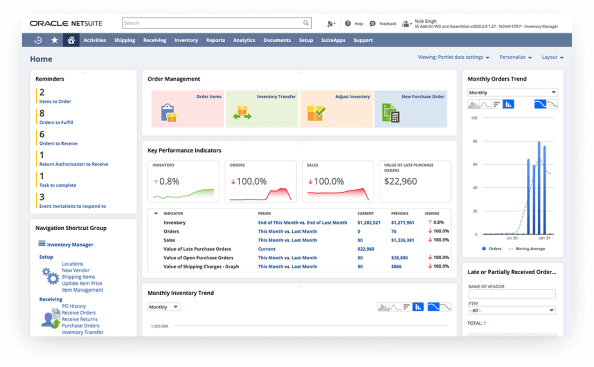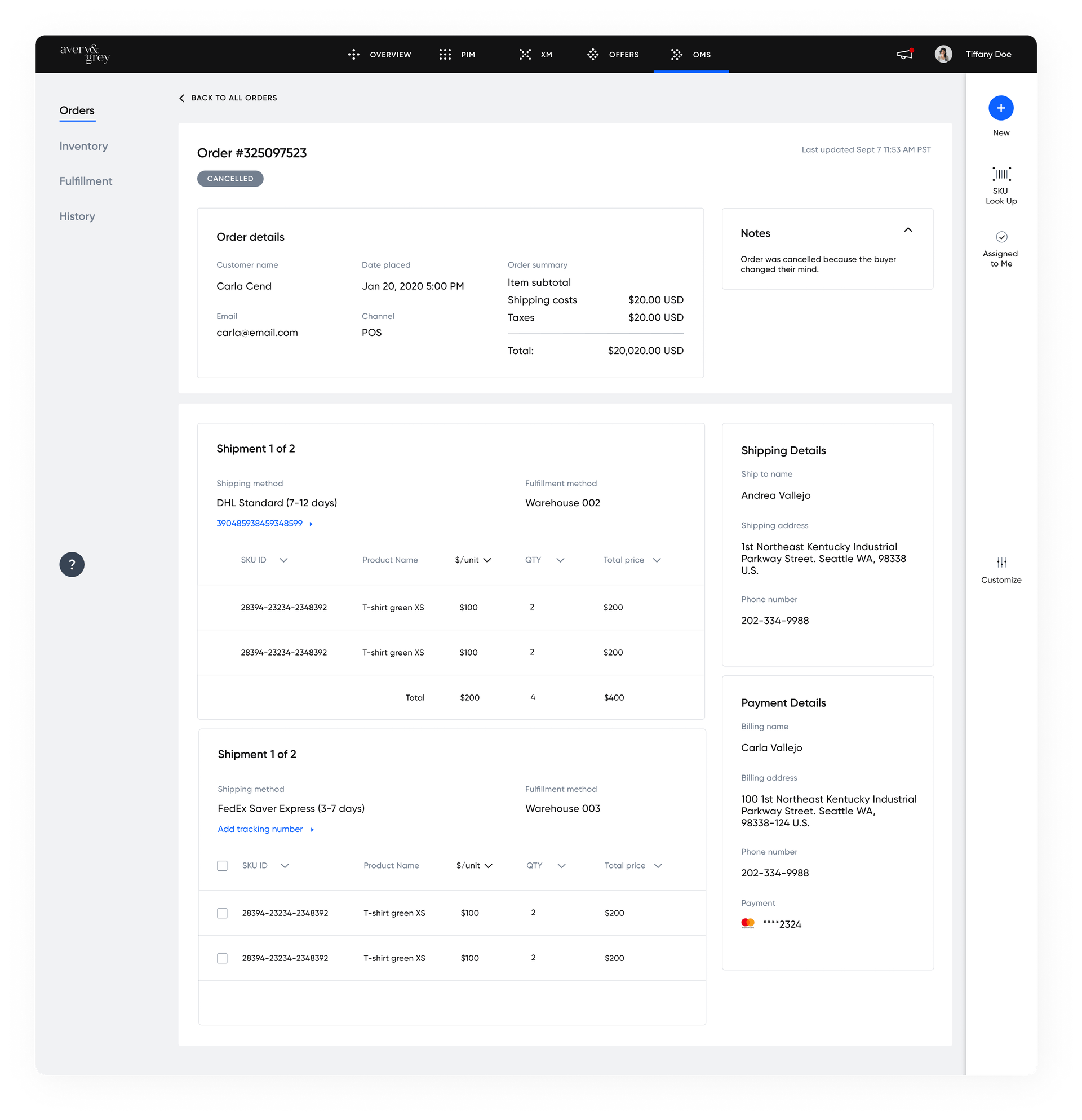What Is Netsuite Order Management and Its Alternatives?

Netsuite Advanced Order Management is an order management system (OMS) owned by Oracle. Netsuite’s OMS put an emphasis on automation, covering a variety of fulfillment options and managing the entirety of the order management process. Although it was an early investor, Oracle didn’t formally purchase Netsuite until 2016.
Because of Netsuite’s long history in the business, it has a well-established model and extensive feature set. However, this also indicates that its core architecture isn’t at the cutting edge anymore. Since then, more popular alternatives to Netsuite’s OMS have arisen. Netsuite’s advantages, disadvantages, and alternatives to Netsuite Advanced Order Management are all important to consider when making the critical decision of what OMS to use.
[toc-embed headline=”Netsuite Advanced Order Management Features”]
Netsuite Advanced Order Management Features
Advantages of Advanced Netsuite Order Management
As a well-established OMS platform, Netsuite OMS has a large feature set. It also integrates well with Netsuite and Oracle systems, so it can be a good choice for businesses that already rely on Netsuite for financial and other applications.
Netsuite relies on its well-developed features to show customers why it’s worth the up-front cost. It puts a strong emphasis on the ease with which its users can automate repetitive tasks and optimize fulfillment through better routing and accuracy. Gartner sells Netsuite Advanced Order Management as a part of Netsuite ERP, and its reviews are 4.3 stars out of five.
Beyond its own features, Netsuite’s OMS connects easily to other Netsuite and Oracle products. Netsuite has one of the most powerful and popular finances and accounting platforms, so companies using both its OMS and accounting software can easily move data in between the two. This results in smoother workflows and fewer errors.
Disadvantages of Advanced Netsuite Order Management
Netsuite’s advantages, however, don’t make up for its drawbacks. Netsuite has an older platform that doesn’t take advantage of the headless and microservices-based commerce technologies that have emerged more recently. This makes it more difficult for companies to justify the high cost of the service.
Netsuite sells its order management service as a part of its enterprise resource planning (ERP) software. Its ERP is an extensive service with a large number of distinct applications, each of which has its own purpose. Many enterprise and mid-market customers already have technology that covers those purposes, so the significant expense of the ERP software is spent on unused functionality.
Among older OMS options, Netsuite’s user interface (see below) is more intuitive and modern than many. It doesn’t rely on a command-line interface like Oracle’s platform, and it’s been updated more recently than many comparable platforms. Still, it isn’t purpose-built as an OMS but as a general ERP platform, and its design is much less modern than that of the more cutting-edge options.
[toc-embed headline=”Alternatives to Advanced Netsuite Order Management”]
Alternatives to Advanced Netsuite Order Management
The alternatives to Netsuite Advanced Order Management range from traditional platforms (some of which are even older than Netsuite) to the more modern, headless commerce platforms. Below is a list of each of the most popular alternatives to Netsuite, along with some of their unique advantages and drawbacks.
Traditional OMS alternatives
- Oracle’s order management platform has been around in one form or another since 1993. While its legacy architecture holds it back from leading these days, it still has a strong feature set among traditional OMS platforms.
- IBM Websphere Commerce is one of the oldest enterprise e-commerce solutions, but it’s still an industry leader. It was purchased more recently in 2019 but remains a legacy, Java-based platform like Oracle.
- SAP Hybris is another legacy system with significant technical debt. Like Websphere and Oracle, it’s a monolithic, Java-based platform that lacks the flexibility of modern architecture.
- Demandware or Salesforce Commerce Cloud is a step ahead of older systems like Hybris and Websphere, but it remains in the legacy system category. Many of its customers are moving on to microservices-based commerce after being unsatisfied with its gaps in speed and security.
Modern OMS alternatives
- Shopify’s headless system puts it in the more modern set of alternatives, but it is at risk of losing its position as an industry leader. It has plateaued in recent years because Shopify decided against a microservices-based architecture. While it offers more flexibility than legacy platforms, it still doesn’t offer everything that newer software can.
- BigCommerce has a smaller footprint than Shopify but has many of the same benefits and drawbacks. Its headless architecture allows flexibility and customization, however, its high costs and centralized architecture put you at the mercy of BigCommerce if it makes changes to the core platform.
- fabric’s cutting-edge architecture makes it a leader in OMS security and flexibility. It helps reduce training costs with its intuitive user interface and modern design, and its microservices architecture lets you customize it to suit your specific needs.
[toc-embed headline=”Key Takeaways”]
Key Takeaways
- Netsuite Advanced Order Management has some advantages over other legacy order management systems but still lags because of its monolithic nature.
- Many alternatives to Netsuite have the same lack of flexibility, and their rigid structure means users are charged for features they don’t need.
- Some modern Netsuite alternatives like Shopify and BigCommerce don’t have the scalability and customization possibilities of true microservices-driven commerce platforms.
- fabric OMS has the security and capacity for customization that modern enterprises demand. Its microservices architecture means that users only pay for the services they need.

Tech advocate and writer @ fabric.

